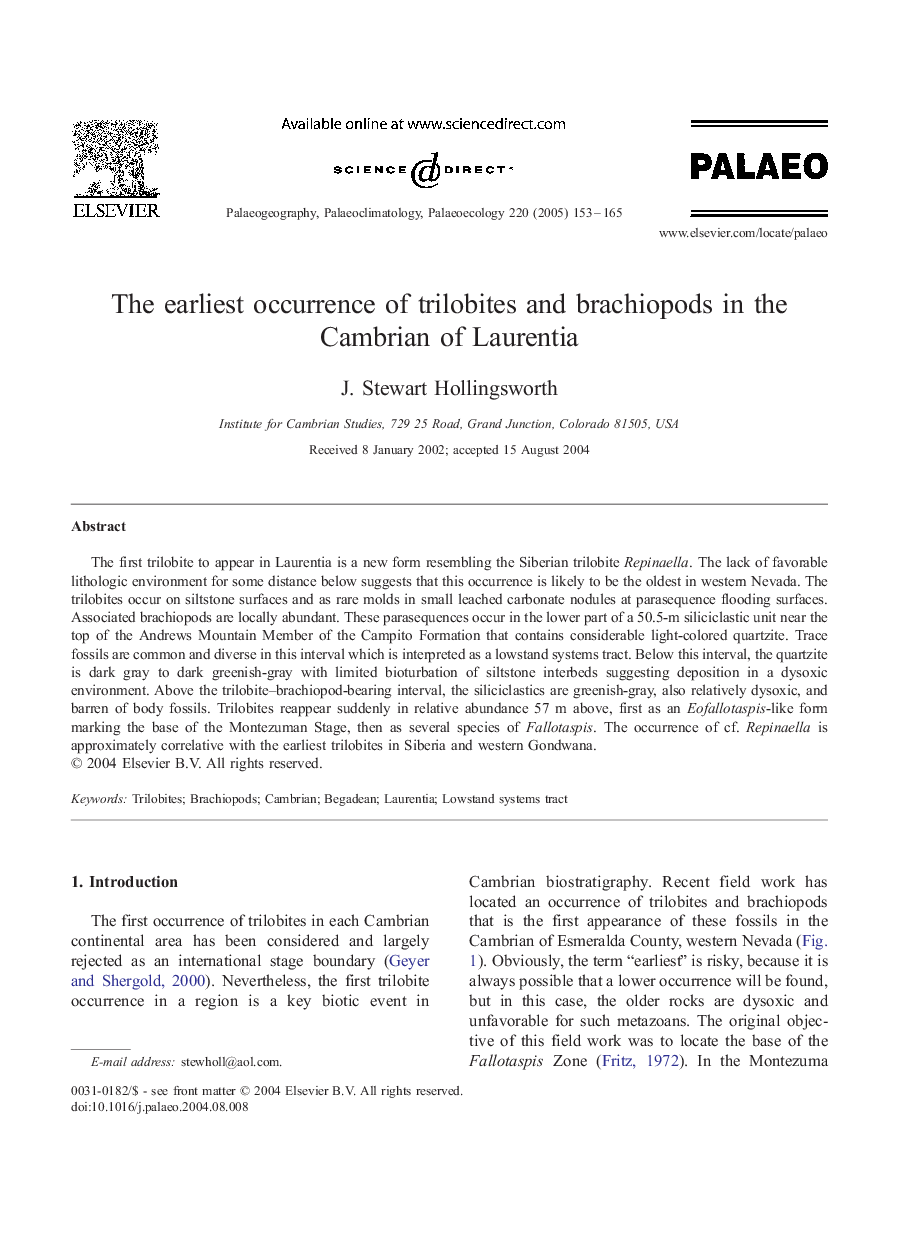| Article ID | Journal | Published Year | Pages | File Type |
|---|---|---|---|---|
| 9463220 | Palaeogeography, Palaeoclimatology, Palaeoecology | 2005 | 13 Pages |
Abstract
The first trilobite to appear in Laurentia is a new form resembling the Siberian trilobite Repinaella. The lack of favorable lithologic environment for some distance below suggests that this occurrence is likely to be the oldest in western Nevada. The trilobites occur on siltstone surfaces and as rare molds in small leached carbonate nodules at parasequence flooding surfaces. Associated brachiopods are locally abundant. These parasequences occur in the lower part of a 50.5-m siliciclastic unit near the top of the Andrews Mountain Member of the Campito Formation that contains considerable light-colored quartzite. Trace fossils are common and diverse in this interval which is interpreted as a lowstand systems tract. Below this interval, the quartzite is dark gray to dark greenish-gray with limited bioturbation of siltstone interbeds suggesting deposition in a dysoxic environment. Above the trilobite-brachiopod-bearing interval, the siliciclastics are greenish-gray, also relatively dysoxic, and barren of body fossils. Trilobites reappear suddenly in relative abundance 57 m above, first as an Eofallotaspis-like form marking the base of the Montezuman Stage, then as several species of Fallotaspis. The occurrence of cf. Repinaella is approximately correlative with the earliest trilobites in Siberia and western Gondwana.
Related Topics
Physical Sciences and Engineering
Earth and Planetary Sciences
Earth-Surface Processes
Authors
J. Stewart Hollingsworth,
